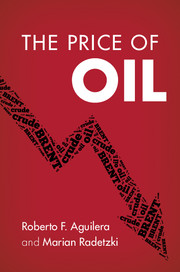Book contents
- Frontmatter
- Contents
- Figures
- Tables
- Acknowledgments
- 1 Introduction and overview
- PART I OIL'S EXTRAORDINARY PRICE HISTORY: HOW CAN IT BE EXPLAINED?
- PART II THE SHALE AND CONVENTIONAL OIL REVOLUTIONS: LOW PRICES AHEAD
- 7 The shale revolution: US achievements to date and envisaged impacts on global energy markets
- 8 Longevity of US shale oil: have we only seen the beginning?
- 9 The conventional oil revolution
- 10 Environmental issues arising from the revolutions
- 11 Will the revolutions spread globally?
- 12 A substantial long-term price fall in store
- PART III GLOBAL IMPLICATIONS FOR THE MACROECONOMY, THE ENVIRONMENT AND FOR POLITICS
- CONCLUSIONS
- References
- Index
8 - Longevity of US shale oil: have we only seen the beginning?
from PART II - THE SHALE AND CONVENTIONAL OIL REVOLUTIONS: LOW PRICES AHEAD
Published online by Cambridge University Press: 05 November 2015
- Frontmatter
- Contents
- Figures
- Tables
- Acknowledgments
- 1 Introduction and overview
- PART I OIL'S EXTRAORDINARY PRICE HISTORY: HOW CAN IT BE EXPLAINED?
- PART II THE SHALE AND CONVENTIONAL OIL REVOLUTIONS: LOW PRICES AHEAD
- 7 The shale revolution: US achievements to date and envisaged impacts on global energy markets
- 8 Longevity of US shale oil: have we only seen the beginning?
- 9 The conventional oil revolution
- 10 Environmental issues arising from the revolutions
- 11 Will the revolutions spread globally?
- 12 A substantial long-term price fall in store
- PART III GLOBAL IMPLICATIONS FOR THE MACROECONOMY, THE ENVIRONMENT AND FOR POLITICS
- CONCLUSIONS
- References
- Index
Summary
As the title implies, this chapter tackles the future of the US shale oil revolution. Is it here to stay? Will it fizzle out towards the end of the decade? The consensus, which we do not share, appears to be that the shale revolution in the US is not a long-term phenomenon. We therefore start by presenting the views of other organizations and attempt to understand their arguments. This is followed by our preview of the future technological prospects for shale oil and our opinion about the revolution's durability, which includes brief critiques of the supply outlooks by the EIA and the IEA. Our perspective on the price fall occurring in late 2014/early 2015, the durability of the lower prices and their implications for US (and international) shale oil supply is also touched upon. Finally, we speculate about possible new additions to the shale oil scene – the inconspicuous plays that could enhance the revolution's staying power.
EXPERT STUDIES ON US PROSPECTS
Judging from the future economic benefits identified in the preceding chapter, a very large-scale expansion can be expected in US shale oil activities in the coming decades. This view is corroborated in some measure by the most recent projections formulated by the EIA and IEA, who envisage continued oil output growth in the US – though at far slower rates than in the recent past. Since IEA includes NGLs in its reported “oil” production forecasts for the US, the following oil production comparison between IEA and EIA includes NGLs.
IEA (2014a) forecasts 2035 US oil output at just over 11 mbd. EIA's (2015a) projection reaches a more optimistic 13.5 mbd in 2035 and remains at that level until 2040. Both agencies view most of the forthcoming expansion coming from shale oil. The revolution is envisaged by both organizations to continue, at least until 2020. By then, the US is seen to become the world's largest oil producer at some 12 mbd in the IEA forecast and 14.6 mbd in the EIA forecast, but remarkably, from then on the shale revolution is exhausted and output starts a long-run decline – shale oil itself peaks in 2020, at 5.6 mbd, and then decreases gradually to 4.3 mbd in 2040 (EIA, 2015a). The country never becomes self-sufficient in oil as imports persevere throughout the long term.
- Type
- Chapter
- Information
- The Price of Oil , pp. 95 - 109Publisher: Cambridge University PressPrint publication year: 2015



